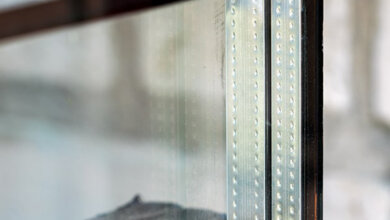The World of Fake Hermès Handbags: A Closer Look
The World of Fake Hermès Handbags: A Closer Look
Luxury fashion has always had an undeniable allure. For decades, elite brands like Hermès have captured the admiration of millions worldwide, not just for their aesthetic appeal but also for their exclusivity and craftsmanship. Among all the luxury items that turn heads, Hermès handbags—particularly the Birkin and Kelly—stand out as the pinnacle of status and style. However, with prestige comes imitation, and the market for fake hermes handbags is not only vast but increasingly sophisticated.
Why Hermès Handbags Are So Coveted
Before diving into the realm of counterfeits, it’s essential to understand why Hermès handbags hold such an iconic place in the fashion world. Every Hermès bag is handcrafted by a skilled artisan, with some bags taking over 20 hours to complete. The materials used—ranging from supple calfskin and exotic crocodile to rare hardware like palladium and gold—add to the mystique and high price. Prices for genuine Hermès bags start at several thousand dollars and can soar well over $100,000, depending on the rarity and customization.
The exclusivity is another factor. Unlike many brands, Hermès does not mass-produce its bags or openly advertise all its models. Purchasing a Birkin, for example, often involves being on a waiting list or building a long-term relationship with a Hermès boutique. This scarcity fuels demand, making these bags a target not just for collectors but also for counterfeiters.
The Rise of Fake Hermès Handbags
As the price and prestige of Hermès bags climb, so does the incentive for counterfeit production. The global counterfeit luxury goods industry is worth billions, and fake Hermès handbags represent a significant portion of that market. From street vendors to online marketplaces, these counterfeit bags are now widely available, often mimicking the real thing with startling accuracy.
Years ago, spotting a fake Hermès was relatively easy—poor stitching, incorrect logos, and cheap materials were giveaways. Today, high-quality replicas known as “super fakes” can deceive even trained eyes. Some counterfeiters go so far as to use genuine leather, replicate serial numbers, and even mimic the brand’s signature orange packaging. This sophistication makes it difficult for everyday consumers to distinguish real from fake, especially when shopping on secondary markets.
Dangers of Buying Fake Hermès Bags
While the appeal of getting a luxurious-looking bag at a fraction of the cost is understandable, purchasing fake Hermès handbags carries significant risks. First and foremost, it’s illegal. Selling or Hermes birkin replica knowingly buying counterfeit goods violates intellectual property laws in many countries. Customs authorities frequently seize fake bags, and buyers may find themselves out of pocket without legal recourse.
There’s also an ethical concern. The counterfeit industry has been linked to organized crime, child labor, and exploitation. Supporting such markets indirectly funds illegal operations and undermines the craftsmanship of legitimate artisans. Additionally, fake bags lack the durability, resale value, and prestige of genuine Hermès items, meaning what seems like a bargain often becomes a regret.
How to Spot a Fake Hermès Handbag
Identifying a counterfeit Hermès bag can be tricky, especially with high-quality replicas. However, there are still telltale signs to look for. Genuine Hermès bags have flawless stitching—always done by hand with waxed linen thread in a saddle stitch pattern. The logo should read “Hermès Paris Made in France” with crisp, evenly spaced letters. Hardware should feel weighty and high quality, and zippers should operate smoothly.
Another essential factor is the smell. Authentic Hermès leather has a rich, luxurious scent, while many fakes carry a chemical or plastic odor. Finally, every real Hermès bag comes with a blind stamp, indicating the year and artisan who made it. While counterfeiters try to replicate these marks, they often get the details wrong or place them in incorrect locations.
The Role of the Resale Market
The booming resale market has both positive and negative effects on the spread of counterfeit Hermès bags. On one hand, it provides a way for individuals to purchase authentic bags without waiting lists or retail markups. Trusted platforms like The RealReal, Vestiaire Collective, and Rebag invest in expert authentication processes to ensure buyers get the real thing. On the other hand, less regulated sites and peer-to-peer sales platforms like eBay or Facebook Marketplace are hotspots for fakes.
Consumers looking to buy pre-owned Hermès handbags must do thorough research and only deal with reputable sellers. Asking for authentication certificates, detailed photos, and original receipts can help ensure legitimacy.
Conclusion
Fake Hermès handbags represent more than just fashion knockoffs—they reflect a global issue involving legality, ethics, and consumer awareness. While the temptation to own a luxury item at a lower price is strong, the consequences of purchasing counterfeit goods are far-reaching. As counterfeits become more convincing, it’s more important than ever for buyers to educate themselves and make responsible shopping decisions. After all, true luxury isn’t just about appearance—it’s about authenticity.




